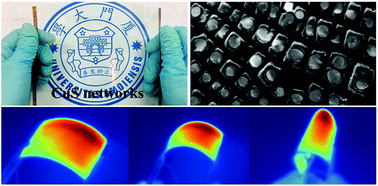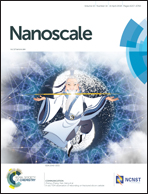A high-response transparent heater based on a CuS nanosheet film with superior mechanical flexibility and chemical stability†
Abstract
Transparent heaters are widely used in technologies such as window defrosting/defogging, displays, gas sensing, and medical equipment. Apart from mechanical robustness and electrical and optical reliabilities, outstanding chemical stability is also critical to the application of transparent heaters. In this regard, we first present a highly flexible and large-area CuS transparent heater fabricated by a colloidal crackle pattern method with an optimized sheet resistance (Rs) as low as 21.5 Ω sq−1 at a ∼80% transmittance. The CuS transparent heater exhibits remarkable mechanical robustness during bending tests as well as high chemical stability against acid and alkali environments. In the application as a transparent heater, the CuS heater demonstrates a high thermal resistance of 197 °C W−1 cm2 with a fast switching time (<30 s), requiring low input voltages (<4.5 V) to achieve uniform temperatures of ∼110 °C across large areas. The temperature of the wearable CuS heater, which is stuck on the skin, can be real-time controlled through a Bluetooth device in a cell phone wirelessly. Based on the wireless control system, we demonstrated an application of the CuS heater in snow removal for solar panels. These CuS network TCEs with high flexibility, transparency, conductivity, and chemical stability could be widely used in wearable electronic products.



 Please wait while we load your content...
Please wait while we load your content...